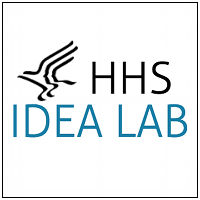 By Mona Siddiqui
By Mona Siddiqui
Twitter: @HHSIDEALab
“A medical team is not much different from the military. There is a hierarchy. Problems and ideas need to be addressed through your chain of command.”
As a third year medical student, these were the words I heard from the surgical fellow running my team. His message was clear: you have a role and you have your tasks-don’t rock the boat.
In an institution with multiple hierarchical structures among physicians, between providers such as doctors and nurses and certainly across providers and patients, the practice of medicine has been stuck in a rut. Despite “innovations” in payment and the slow embrace of a safety culture, we don’t typically associate health systems with many of the words inherent to transformative practices: nimbleness, agility, usability. In fact, over the past two decades that I have personally spent on the frontlines of medicine, one of the most fundamental problems has been medicine’s “top down” approach to transformation.
Changing the way we practice medicine is hard. Changing the way we think about our practice approach is even harder. To empower frontline staff to be problem solvers and to see themselves as such is a bottom up approach that I had the privilege to see first-hand at the University of Texas Medical Branch’s (UTMB) Maker Space. Located on Galveston Island, Texas, which has historically seen its share of natural disasters, innovation is not just a buzz word at UTMB but inherent in its approach to practice improvement. From the architectural design of the new campus, which has been built to withstand flooding to its leading embrace of a Maker Space, UTMB is actively exploring ways to push the envelope. The excitement of their staff, from the nurses to the administrators, is contagious.
Taking 10-20 minutes at a time from regular shift work, one nurse demonstrated a prototype he has built over time for a self-operating irrigation system that could be used for burn patients and free up staff to engage in other tasks. Usually a manual task, a patient with a severe burn requiring 11 hours of irrigation prompted this nurse to come up with a better solution. While still in development, the potential of this tool to help alleviate the suffering of a single patient or to free up significant time in the event of a disaster is unquestionable.
As a provider, in the course of a single day, multiple ideas present themselves in the desire to tailor treatment to a particular patient or a new scenario. In the absence of a venue where these problems and nascent solutions can fully take shape, however, practitioners struggle in isolated silos. Lack of on-the-ground, knowledge-driven innovation, coupled with unending top down “solutions”, has left many providers feeling frustrated and without a voice in changing the ways in which care is delivered to their patients.
Maker Spaces, especially as implemented at UTMB, can fundamentally change this dynamic. Although there may be many examples of informal maker communities in health care delivery such as those that arise in disaster zones, solutions that emerge when our Emergency Medical Technicians arrive at a home or when firefighters respond to a community emergency, innovating at the point of care has not been an institutional part of our health care culture.
Diametrically opposite the culture of our delivery system is that of NASA where “innovation” is synonymous with its name. In addition to visiting the Maker Space, I had the chance to participate in a roundtable discussion that convened individuals from across the health care spectrum, from those practicing in extreme environments and those that are instrumental to NASA’s missions and several lessons emerged:
- first, while defined roles are important to completing tasks, empowering individuals to also act on front line problems leads to better, more efficient solutions;
- second, point of care solutions do not need to be scaled to provide value;
- third, value in point of care solutions can be derived from not just financial savings but many other outcomes including more personalized care and improved patient/provider perspectives on health care systems and their respective roles.
Value in healthcare is not as quantifiable as our current conversations around payment would make it seem. Changing the way in which care is delivered will also not be a function of payment alone but of changing the ways in which all of us see our roles in the healthcare system. Contrary to the belief of my surgical fellow, it is those individuals preserving the hierarchical constraints of traditional medicine that are imperiled. Efficient systems will harness individual creativity in the service of patients and their often unique needs. Many hospitals have taken first steps in this leap in establishing innovation centers. As institutions like UTMB bring together the elements necessary for maker spaces to take shape and thrive, these hospitals will have a blueprint to take the next steps in the pursuit of a clear value proposition.
This article was originally published on HHS Idea Lab and is republished here with permission.
